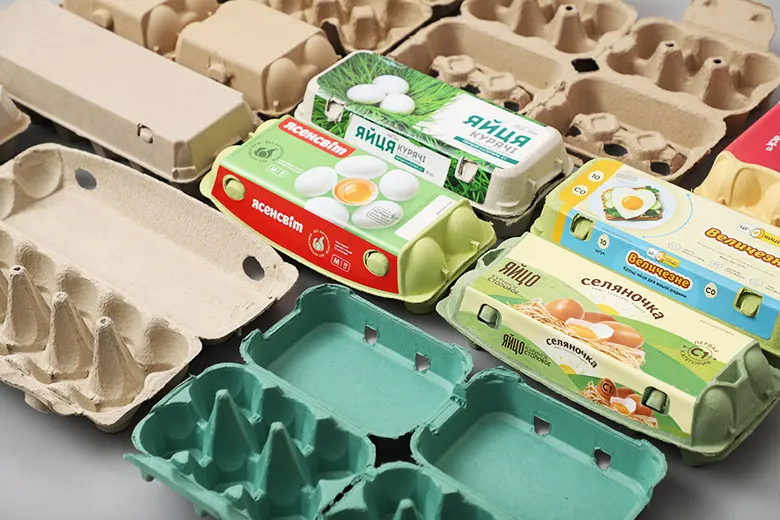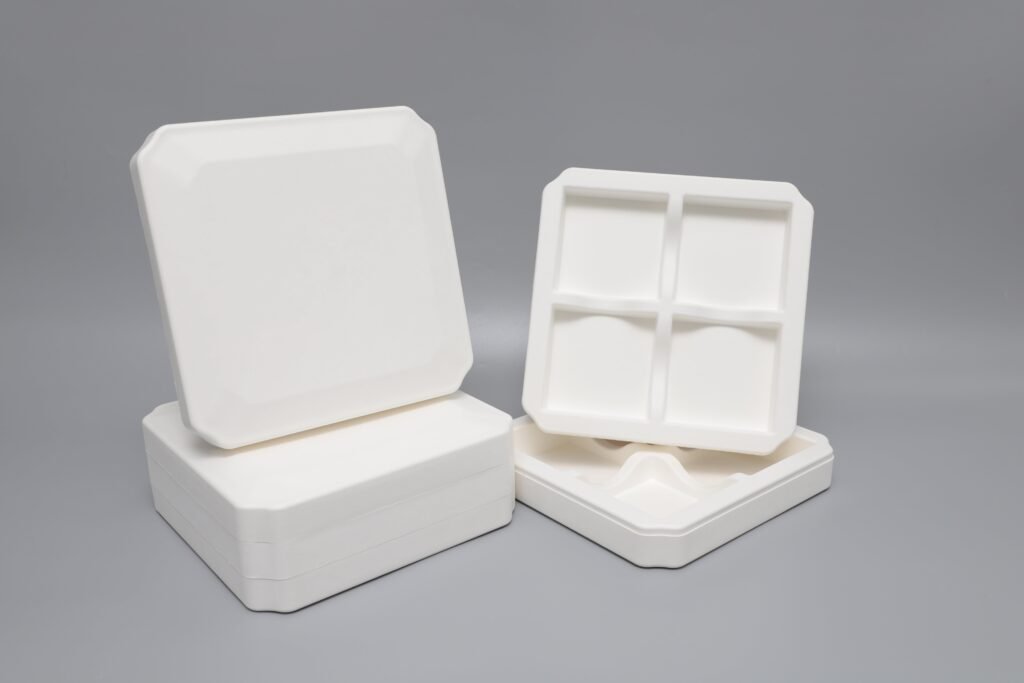Pulp molding is a popular eco-friendly process used to manufacture biodegradable packaging products like trays, plates, cups, and egg cartons. Two common forming techniques in pulp molding are dry pressing and wet pressing, each with distinct technical features and resulting product characteristics.
Technical Differences
Dry Pressing:
- In dry pressing, the pulp material is formed with relatively low moisture content.
- The pulp slurry is first partially dried or dewatered before molding.
- The molding process applies high pressure and sometimes heat to compress the pulp into a dense, compact shape.
- The product is then further dried, often with hot air or heated molds, to remove residual moisture and solidify the shape.
- Dry pressing typically involves less water usage and faster molding cycles compared to wet pressing.

Wet Pressing:
- Wet pressing uses a high-moisture pulp slurry directly in the molding process.
- The pulp slurry is deposited into a porous mold, and water is removed mainly through vacuum suction or drainage.
- After forming, the product is still wet and requires a drying phase, which can be done by air drying, hot air, or heated molds.
- Wet pressing often involves slower cycle times due to the higher moisture content that needs to be removed.
- This method is more traditional and widely used for products like egg trays and fruit trays.

Product Differences
Products from Dry Pressing:
- Generally denser, stronger, and smoother in surface texture due to the high compression.
- More dimensionally stable and resistant to deformation.
- Often used for high-end packaging such as cup carriers, food containers, and industrial packaging that require strength and durability.
- Can achieve finer detail and sharper edges because of the pressure applied during molding.
- Typically more uniform in thickness and weight.
Products from Wet Pressing:
- Usually lighter and more porous, with a rougher surface.
- Less dense, which may reduce strength but improves cushioning and shock absorption.
- Commonly used for disposable packaging like egg trays, fruit trays, and protective packaging where lightweight and cushioning are important.
- Edges and surface details may be less precise due to the pulp slurry’s higher water content.
- Often less dimensionally stable and may deform under heavy loads or moisture.
Summary
| Aspect | Dry Pressing | Wet Pressing |
|---|---|---|
| Moisture Content | Low during molding | High during molding |
| Forming Method | High pressure and heat | Vacuum suction and drainage |
| Cycle Time | Faster | Slower |
| Product Density | Higher | Lower |
| Surface Finish | Smooth, detailed | Rough, porous |
| Strength | Strong, durable | Lightweight, cushioning |
| Typical Applications | Cup carriers, food containers, industrial packaging | Egg trays, fruit trays, cushioning packaging |



